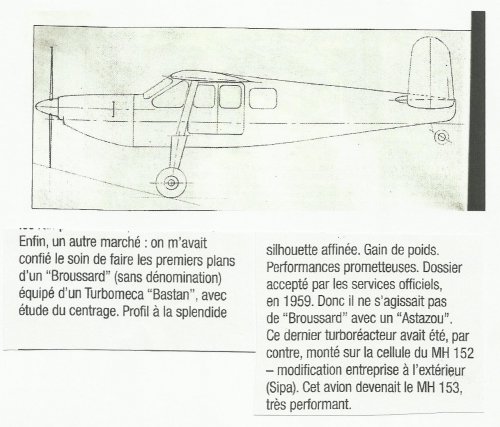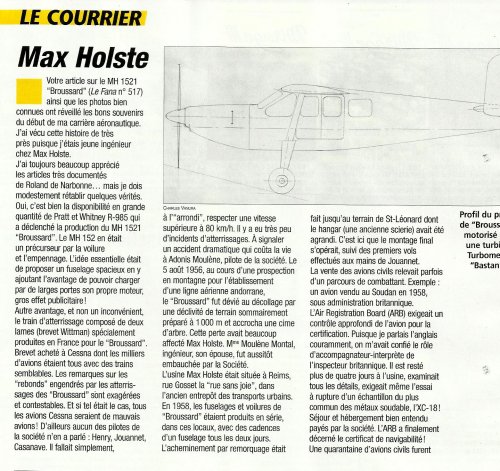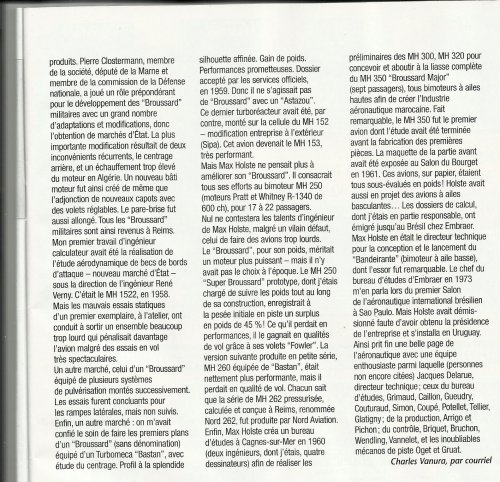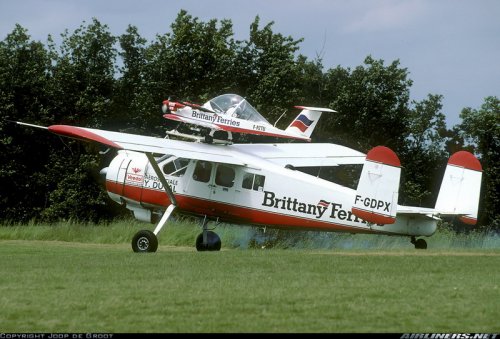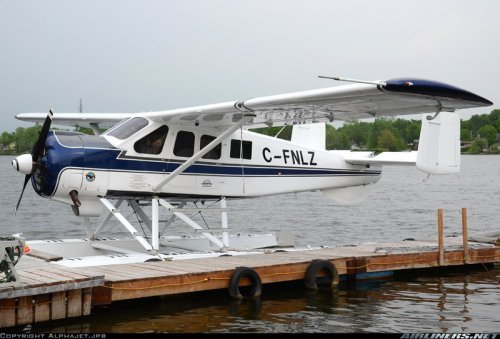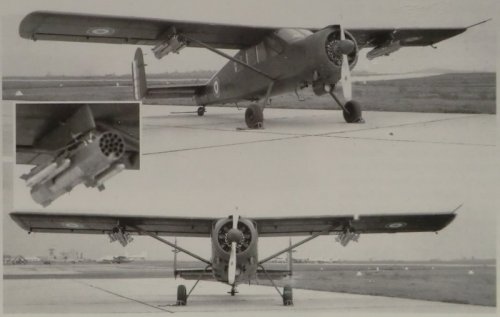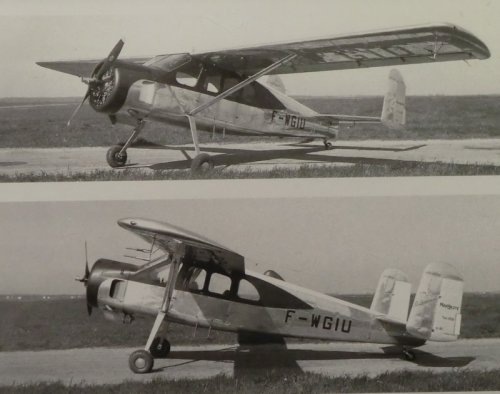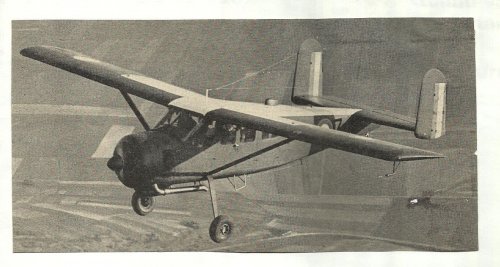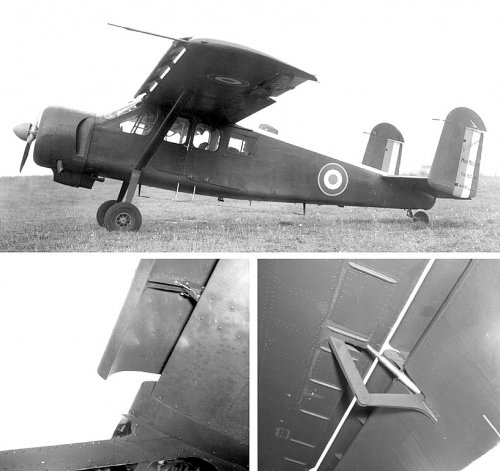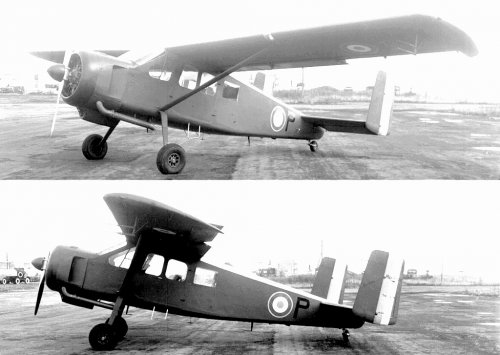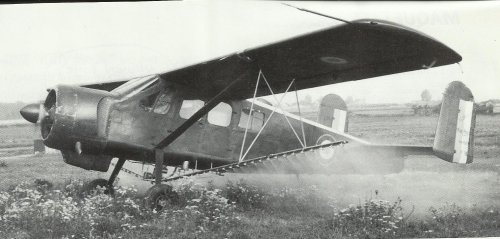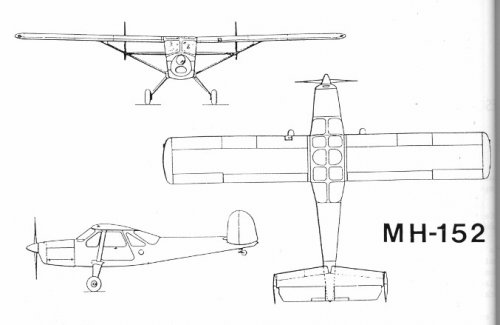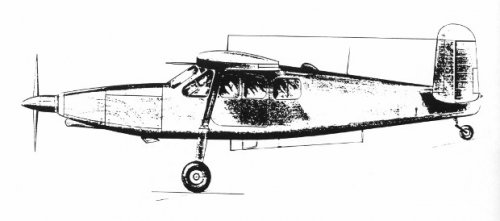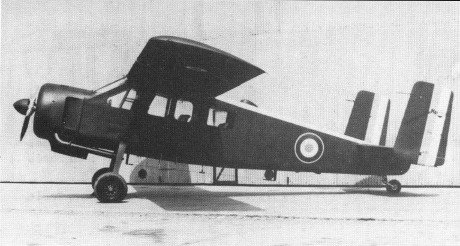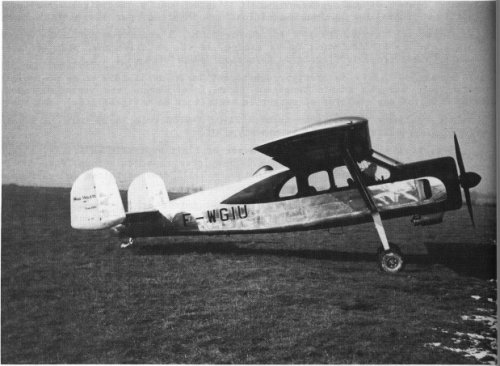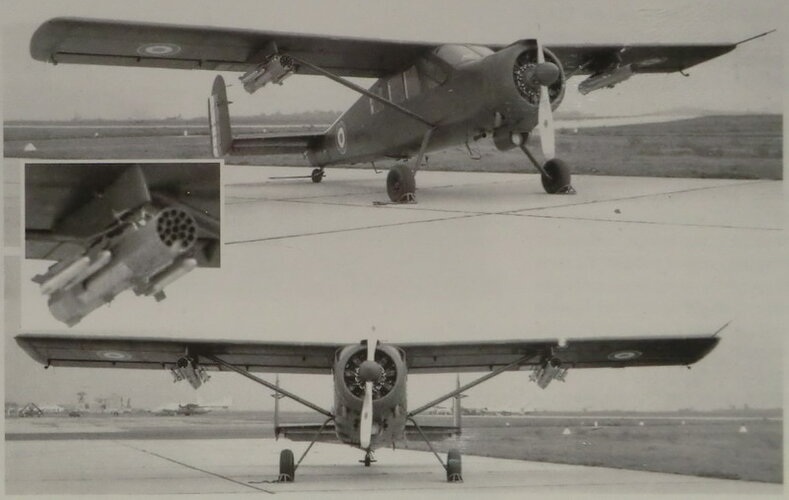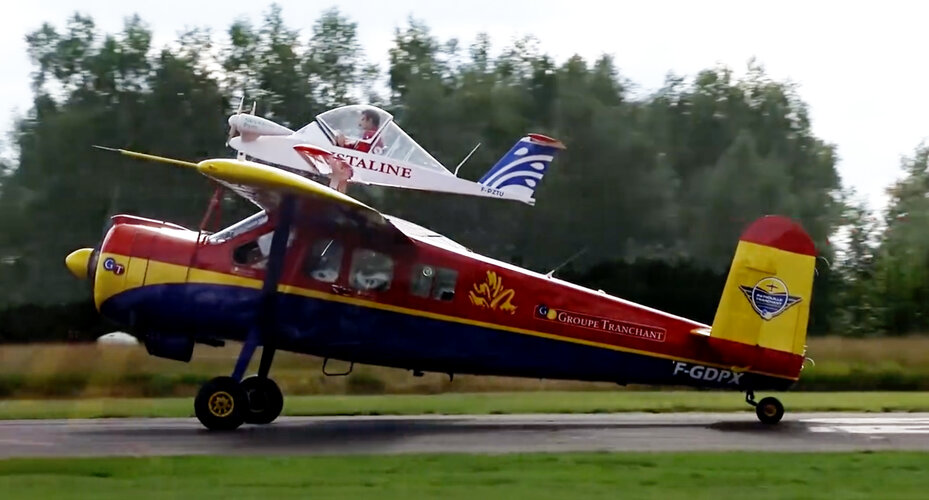You are using an out of date browser. It may not display this or other websites correctly.
You should upgrade or use an alternative browser.
You should upgrade or use an alternative browser.
Max Holste - MH.150 / 152 / 1521 prototypes/projects
- Thread starter toura
- Start date
- Joined
- 11 March 2006
- Messages
- 8,608
- Reaction score
- 3,061
Thank you, Paul !
Have looked for other versions of the Broussard, but it seems, this aircraft wasn't changed
much during its career. The prototype MH.1521-01 still had a cowling with a slightly different
shape and aircraft N° 34 was used for armament trials (photos from Fayer "Prototypes de
l'Aviation Francais"), although, AFAIK, this configuration was used in service.
Additionally I've found a privately owned Broussard on floats and one used as a "flying
aircraft carrier", launching a Colomban Cri-cri as an airshow stunt . (photos from http://www.airliners.net/ )
Have looked for other versions of the Broussard, but it seems, this aircraft wasn't changed
much during its career. The prototype MH.1521-01 still had a cowling with a slightly different
shape and aircraft N° 34 was used for armament trials (photos from Fayer "Prototypes de
l'Aviation Francais"), although, AFAIK, this configuration was used in service.
Additionally I've found a privately owned Broussard on floats and one used as a "flying
aircraft carrier", launching a Colomban Cri-cri as an airshow stunt . (photos from http://www.airliners.net/ )
Attachments
My precedent image is, I thing,
one of the mh 1521 pre production
military variant...........
Now from "Aviation ancienne.com"
is the modified prototype flown in 1958 with full span
leading edge slots and double slotted trailing edge flaps
to improve stall performance
one of the mh 1521 pre production
military variant...........
Now from "Aviation ancienne.com"
is the modified prototype flown in 1958 with full span
leading edge slots and double slotted trailing edge flaps
to improve stall performance
Attachments
Yes, this was the only MH.152 built. With Astazou it was called MH.153, it was a testbed for that engine.Jemiba said:One MH.152 was modified and got an Astazou engine:
I became interested in the MH-1521 only recently when I read Pierre Clostermann's book "Appui-Feu" about the war in Algeria. Readign what is available in the net, I started wondering why the French actually copied the DHC.2 Beaver instead of just buying it from the Canadians. May it be that Pierre Clostermann as an active politician and a friend of Max Holste was really involved in this subject? Ok; I have no evidence but just some reading in the internet...
- Joined
- 11 March 2006
- Messages
- 8,608
- Reaction score
- 3,061
Well, the word "copying" probably would result in legal problems, if mentioned publicly, 
"inspired" maybe a better term, I think. And the basic configuration was used by other ypes,
too, see the Pilatus Porter or Do 27. That the same engine was used, could be explained by
the easy availability of the P & R R-985, its success and being in the needed power class.
And severasl sources state, that the Broussard was regarded as just an enlargement of the
MH.152, itself inspired by the Fieseler Storch/Morane-Saulnier MS.500/501.
That said, I've found no evidence for this, too, which of course not excludes, that there may be
a grain of truth.
"inspired" maybe a better term, I think. And the basic configuration was used by other ypes,
too, see the Pilatus Porter or Do 27. That the same engine was used, could be explained by
the easy availability of the P & R R-985, its success and being in the needed power class.
And severasl sources state, that the Broussard was regarded as just an enlargement of the
MH.152, itself inspired by the Fieseler Storch/Morane-Saulnier MS.500/501.
That said, I've found no evidence for this, too, which of course not excludes, that there may be
a grain of truth.
Inspired.
The Pilatus Porter was designed by the same engineer who already did the Alfred Comte AC.4 and the Pilatus P4 - I see it clearly as an independent line of development, not related to the DHC.2.
I read that the P&W Junior Wasp radial engine was out of production - but that production had been taken up again after the French were looking to buy exactly these engines.
The engine and the look of the front window of the MH-1521 give it a very similar look as the Beaver; I guess that this is the reason why the aircraft is also called the "French Beaver".
The Pilatus Porter was designed by the same engineer who already did the Alfred Comte AC.4 and the Pilatus P4 - I see it clearly as an independent line of development, not related to the DHC.2.
I read that the P&W Junior Wasp radial engine was out of production - but that production had been taken up again after the French were looking to buy exactly these engines.
The engine and the look of the front window of the MH-1521 give it a very similar look as the Beaver; I guess that this is the reason why the aircraft is also called the "French Beaver".
Kuno said:Readign what is available in the net, I started wondering why the French actually copied the DHC.2 Beaver instead of just buying it from the Canadians.
It seems that the need for the Broussard was not understood by the French military until after Max Holste proposed the aircraft.
The original government specification was for an artillery observation aircraft for the Army, and Max Holste answered with the MH.152.
Independently, the 1950 aeronautical congress of the "Union Française" (name used at the time for the French colonies) acknowledged the need for a bush plane ("avion de brousse") like the Beaver. This is how Max Holste got the idea of modifying the MH.152 into the MH.1521, and proposed it to the authorities. In the book by Jacques Delarue, both the Beaver and the Scottish Aviation Pioneer are acknowledged as sources of inspiration for the MH.1521 Broussard.
Max Holste acted quickly to build the two prototypes, and started serial production before receiving the official orders. Because the aircraft was good, he succeeded in getting it ordered in quantity.
Adrien
- Joined
- 9 October 2009
- Messages
- 19,933
- Reaction score
- 10,445
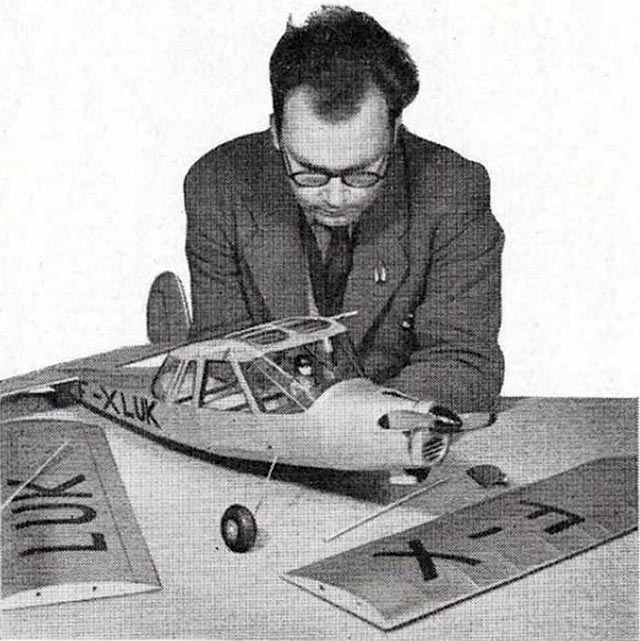
Max Holste MH.152: Daddy Cool (XXVIII).
Max Holste looking pensive at his brainchild, turned here into the powered scale model format. Photo taken from the “Aeromodeller” magazine July, 1955 issue.
- Joined
- 11 March 2012
- Messages
- 3,016
- Reaction score
- 2,693
Dear Kuno,
It did not matter if Pratt & Whitney quit building Pratt & Whitney R-985 engines in 1945, because so many thousand were available on the war surplus market. Immediately after World War 2, deHavilland of Canada, PWC, etc. attended post-war auctions snapping up hundreds of airworthy airplanes for pennies on the dollar. Some of those airplanes (e.g. Avro Anson IV) were immediately stripped of parts and scrapped. That is one of the reasons that so few plywood Ansons remain in Canada. For the first few years after the war, P&WC were busy over-hauling war surplus engines and re-selling them to airlines. Meanwhile Canadair was busy converting military C-47s into DC-3 civilian airliners.
There were enough war-surplus R-985 engines to power Beechcraft 18 jump planes until about 1990. After I lost a dozen friends killed (plane crash, Hinckley, Illinois, 1992) war-surplus Beechcraft 18 and Douglas DC-3 fell out of fashion for skydiving.
DHC's post war airplanes were mostly powered by war-surplus engines: DHC Gypsy Major, R-985, R-1340 and R-2000.
DHC-3 Beaver first flew in 1947 after exhaustive studies by DHC engineers interviewing Canadian bush pilots.
Brossard did not fly until 1952.
A Canadian rumor has it that French Army officers requested DHC-2 Beavers for their various colonial wars in Indo China, Algeria, etc. Since General DeGaulle refused to buy foreign, Max Holste got the contract. When you compare Beaver and Brossard it is clear that the Brossard is the later simplified, modernized airframe especially around the cockpit.
It did not matter if Pratt & Whitney quit building Pratt & Whitney R-985 engines in 1945, because so many thousand were available on the war surplus market. Immediately after World War 2, deHavilland of Canada, PWC, etc. attended post-war auctions snapping up hundreds of airworthy airplanes for pennies on the dollar. Some of those airplanes (e.g. Avro Anson IV) were immediately stripped of parts and scrapped. That is one of the reasons that so few plywood Ansons remain in Canada. For the first few years after the war, P&WC were busy over-hauling war surplus engines and re-selling them to airlines. Meanwhile Canadair was busy converting military C-47s into DC-3 civilian airliners.
There were enough war-surplus R-985 engines to power Beechcraft 18 jump planes until about 1990. After I lost a dozen friends killed (plane crash, Hinckley, Illinois, 1992) war-surplus Beechcraft 18 and Douglas DC-3 fell out of fashion for skydiving.
DHC's post war airplanes were mostly powered by war-surplus engines: DHC Gypsy Major, R-985, R-1340 and R-2000.
DHC-3 Beaver first flew in 1947 after exhaustive studies by DHC engineers interviewing Canadian bush pilots.
Brossard did not fly until 1952.
A Canadian rumor has it that French Army officers requested DHC-2 Beavers for their various colonial wars in Indo China, Algeria, etc. Since General DeGaulle refused to buy foreign, Max Holste got the contract. When you compare Beaver and Brossard it is clear that the Brossard is the later simplified, modernized airframe especially around the cockpit.
Last edited:
- Joined
- 28 November 2006
- Messages
- 699
- Reaction score
- 637
The rocket launchers seem quite interesting. If I am not mistaken the pod is for eighteen 37mm SNEB rockets. However I am not sure rockets of what type are under the rails. Perhaps they are 90mm training rockets (known, depending on source, as SERAM 900 or T-10 1/2; frankly I can't tell their proper designation). Such a rocket may be seen in fouga_aseet.png picture - first from the left.The prototype MH.1521-01 still had a cowling with a slightly different
shape and aircraft N° 34 was used for armament trials (photos from Fayer "Prototypes de
l'Aviation Francais"), although, AFAIK, this configuration was used in service.
Do you have any idea what rockets were actually tested on the MH.1521?
BR
Piotr
Attachments
Nun, das Wort "Kopieren" würde wahrscheinlich zu rechtlichen Problemen führen, wenn es öffentlich erwähnt wird, "inspiriert" vielleicht ein besserer Begriff,
denke ich. Und die Grundkonfiguration wurde
auch von anderen ypes verwendet, siehe Pilatus Porter oder Do 27. Dass derselbe Motor verwendet wurde, könnte durch
die einfache Verfügbarkeit des P & R R-985, seinen Erfolg und die Zugehörigkeit zur benötigten Leistungsklasse erklärt werden. Und mehrere Quellen geben an, dass der Broussard nur als eine Erweiterung des
MH.152 angesehen wurde, der selbst vom Fieseler Storch/Morane-Saulnier MS.500/501 inspiriert wurde.
Das heißt, ich habe auch dafür keine Beweise gefunden, was natürlich nicht ausschließt, dass es ein Körnchen Wahrheit geben
könnte.
Armin Derer
In dire need for coffee
- Joined
- 10 June 2021
- Messages
- 70
- Reaction score
- 97
Similar threads
-
Max Holste - MH.50 / 52 / 53 / 60 / 100 prototypes/projects
- Started by hesham
- Replies: 32
-
Max Holste - MH.300/350, smaller twin-engine prototypes/projects
- Started by Caravellarella
- Replies: 7
-
-
Bréguet Br.945 twin-engine STOL light military turboprop transport project......
- Started by Caravellarella
- Replies: 3
-
Max Holste S.25 and MH.30 wartime projects
- Started by c460
- Replies: 5

